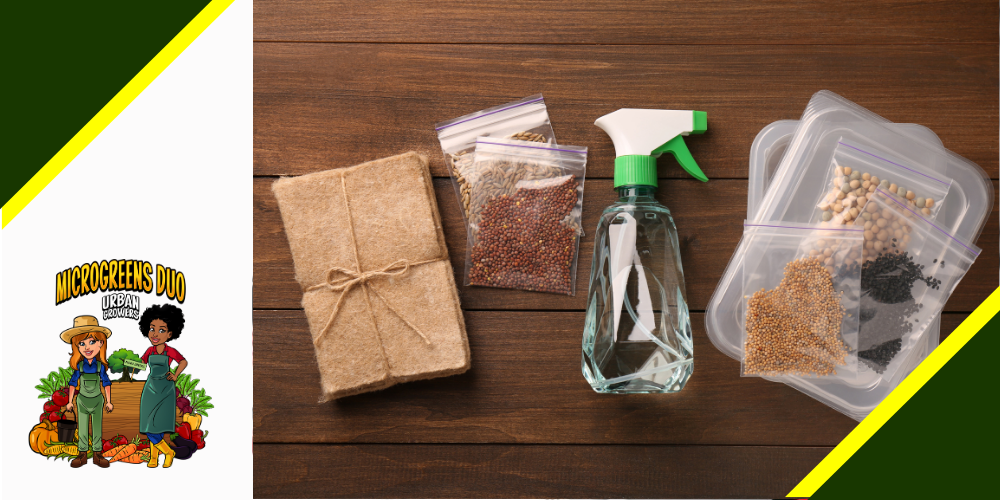
Hey there, fellow green thumbs! Have you heard about microgreens? These tiny, nutrient-packed plants are taking the gardening world by storm. And guess what? You can grow them right at home with a microgreens kit. Let’s dive into the wonderful world of microgreens and how you can easily grow them in your own kitchen!
So, what exactly are microgreens? Well, they’re young vegetable greens that are harvested just after the first leaves have developed. They come in a variety of flavors, from spicy to sweet, and are incredibly nutrient-dense.
Now, you might be wondering, “How can I grow microgreens at home?” That’s where microgreens kits come in! These nifty kits contain everything you need to get started, making it super convenient to grow your own mini garden right on your windowsill.
Think of microgreens as the adolescent version of full-grown vegetables. They’re harvested at around 1-3 inches tall, just after the first true leaves have emerged. Despite their small size, they’re packed with flavor and nutrients.
Don’t let their size fool you—microgreens are nutritional powerhouses! They’re loaded with vitamins, minerals, and antioxidants, making them a great addition to any diet. Plus, since they’re harvested so young, they often contain higher concentrations of these nutrients compared to their mature counterparts.
There’s a microgreen for everyone! Some popular varieties include:
One of the best things about growing microgreens at home is the freshness. You can harvest them right when you need them, ensuring maximum flavor and nutrition. Plus, you have full control over the growing conditions, so you know exactly what you’re putting into your body.
Buying microgreens from the store can get expensive, especially if you use them frequently. By growing your own, you’ll save money in the long run. Plus, you can re-use the growing trays and seeds, making it even more economical.
Growing your own food reduces your carbon footprint by cutting down on transportation and packaging. Plus, you can compost any leftover plant material, further reducing waste. It’s a win-win for you and the planet!
Get the whole family involved in the growing process! Growing microgreens is a fun and educational activity for kids (and adults too!). They’ll learn about plant life cycles, nutrition, and the importance of sustainability.
A microgreens kit is a convenient all-in-one solution for growing microgreens at home. It typically includes:
The seeds provided in microgreens kits are specifically chosen for their flavor and nutrition. The growing medium is carefully formulated to provide the perfect balance of nutrients and moisture. And the tray or container is designed to maximize growing space while minimizing mess.
There are several types of microgreens kits available, including soil-based and hydroponic kits. Soil-based kits use traditional potting mix, while hydroponic kits use a water-based growing medium. Both have their pros and cons, so choose the one that best fits your needs.
When choosing a microgreens kit, consider:
Soil-based kits are more traditional and easy to use, but they require regular watering. Hydroponic kits use less water and can produce faster results, but they may require more upfront investment.
Here are a few kits that come highly recommended:
Check your microgreens daily for growth and water as needed. Remove any dead or yellowing leaves to prevent mold or disease.
Once your microgreens are 1-3 inches tall, they’re ready to harvest! Simply snip them off at the base with a pair of scissors.
Growing microgreens at home is not only easy and fun but also incredibly rewarding. With a microgreens kit, you can enjoy fresh, nutritious greens year-round, right from your own kitchen. So why wait? Get started today and join the microgreens revolution!
Get notified about new articles